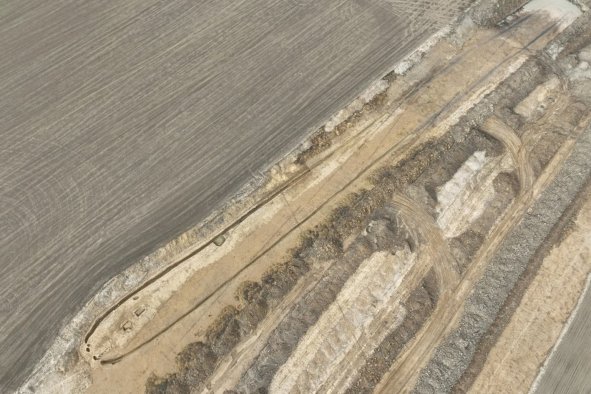Support truly
independent journalism
Support Now
Our mission is to deliver unbiased, fact-based reporting that holds power to account and exposes the truth.
Whether $5 or $50, every contribution counts.
Support us to deliver journalism without an agenda.

Louise Thomas
Editor
The oldest grape fossil uncovered by scientists in a new study reveals how the extinction of dinosaurs paved the way for the spread of the fruit and its related species across the globe.
The research, published in the journal Nature Plants, found fossilised grape seeds ranging from 60 to 19 million years old in Colombia, Panama, and Peru.
One of these represents the earliest known example of a grape family species in the Western Hemisphere, say researchers from Chicago’s Field Museum.
“This discovery is important because it shows that after the extinction of the dinosaurs, grapes really started to spread across the world,” Fabiany Herrera, a curator from the museum, said in a statement.
The findings show that the extinction event that killed the dinosaurs not only impacted the planet’s animals but also vastly affected plants.
“We always think about the animals, the dinosaurs, because they were the biggest things to be affected, but the extinction event had a huge impact on plants too. The forest reset itself, in a way that changed the composition of the plants,” Dr Herrera said.
Understanding extinct plants can be tricky as it is very rare for soft tissues like fruits to be preserved as fossils, but seeds may fossilise and reveal secrets of ancient species.
Researchers pinpoint the earliest known grape seed fossils to India around 66 million years ago when a giant asteroid hit Earth and triggered a massive extinction, altering the course of life on the planet.
They suspect that the disappearance of dinosaurs likely helped alter forests.
Since a large number of dinosaurs were giants, they likely knocked down trees and maintained forests to be more open than they are today, scientists say.
But after these large dinosaurs were wiped out, some tropical forests such as those in South America, became more crowded, the study found.
This led to the forests forming layers of trees with an understory and a canopy.
“In the fossil record, we start to see more plants that use vines to climb up trees, like grapes, around this time,” Dr Herrera said.
The dinosaur extinction event also led to the diversification of birds and mammals that could aid in the spread of grape seeds.

The latest findings were made possible thanks to the discovery of a fossil grape during Dr Herrera’s fieldwork in the Colombian Andes in 2022.
“The fossil was in a 60-million-year-old rock, making it not only the first South American grape fossil, but among the world’s oldest grape fossils as well,” she said.
Researchers could initially identify it based on its shape, size, and other morphological features.
Then CT X-ray scans revealed its internal structure and helped confirm its identity.
“The fossil record tells us that grapes are a very resilient order. They’re a group that has suffered a lot of extinction in the Central and South American region, but they also managed to adapt and survive in other parts of the world,” Dr Herrera said.
Disclaimer: The copyright of this article belongs to the original author. Reposting this article is solely for the purpose of information dissemination and does not constitute any investment advice. If there is any infringement, please contact us immediately. We will make corrections or deletions as necessary. Thank you.



